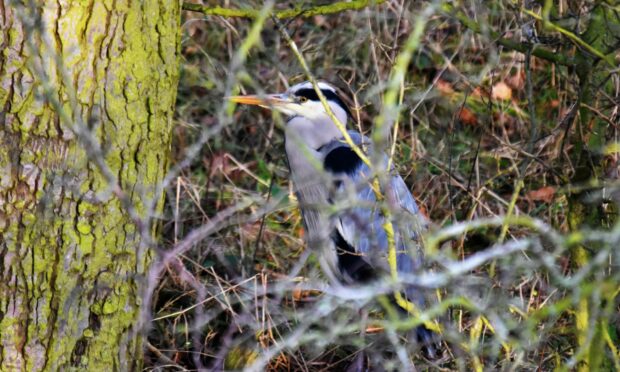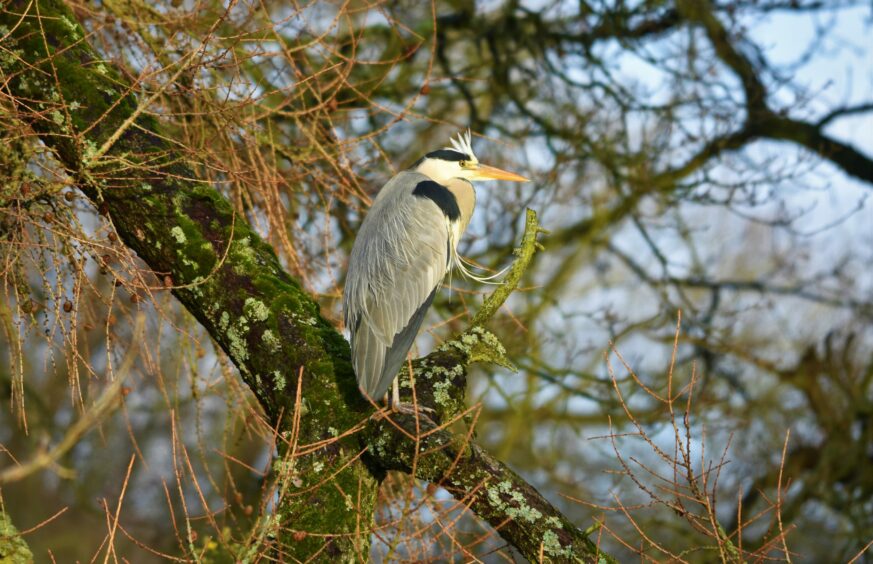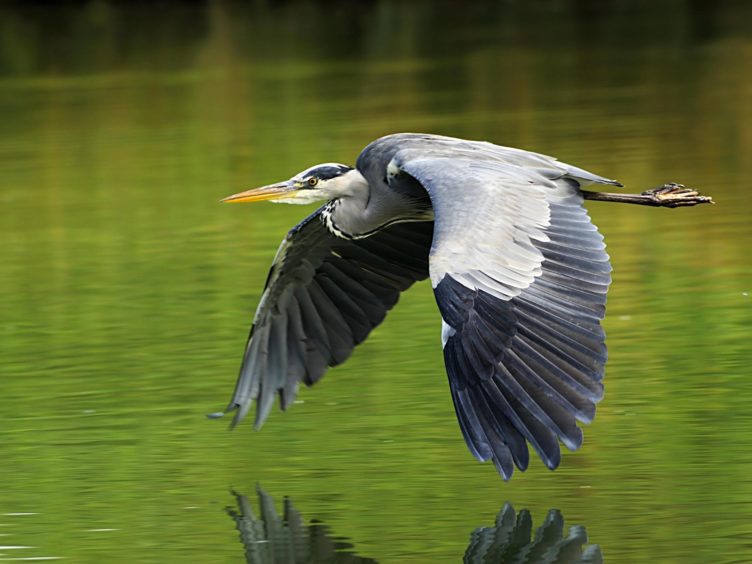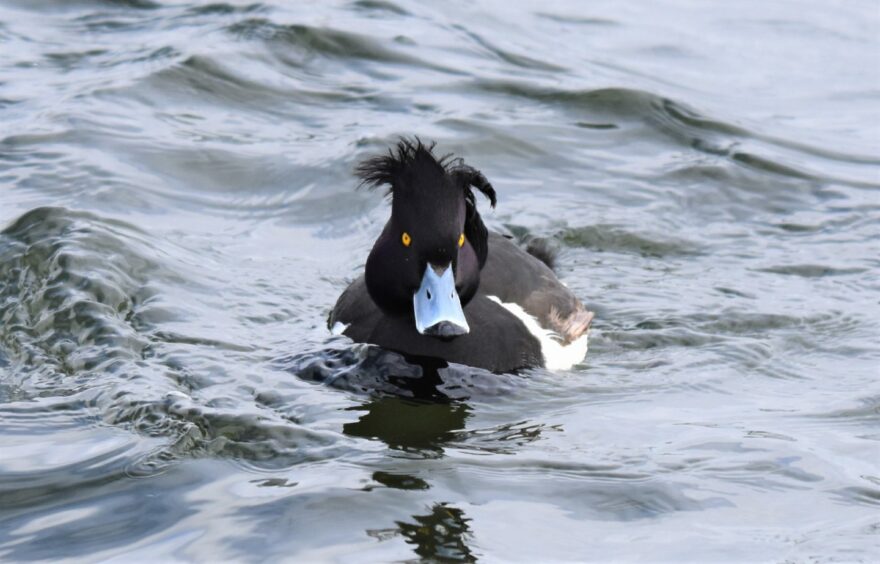A yellow, beady eye shone-out from through the twisted tangle of branches on the far bank of the River Leven in Kinross-shire.
Although this heron appeared to be watching me, it seemed uninterested in my presence, or for that matter, on any of the other walkers on the busy path on the opposite bank.
In fact, this heron was so at peace with the world that it was half-slumbering after a period of fishing.
Communal roosting
Herons sometimes roost communally, and on wandering further along the path, I spotted a further three birds over a short distance, including one resting on an overhanging branch.
In nearby Clackmannanshire, I know of a communal winter heron roost in a field by the River Devon near Alva, where up to a dozen birds congregate at any one time.
There is never any interaction among these herons as they rest, but I imagine they gain comfort by being together with their own kind.
Observing herons resting by day is confirmation to the fact that they often hunt by night, especially when the moon is bright, providing soft illumination in which to hunt the shallow margins of rivers and lochs.
Trout are often active under the cover of darkness, moving into shallow water, and the wily heron knows this, and adopts flexibility in its periods of activity to maximise hunting success.
Adaptable
Herons are adaptable in other ways, and in spring, frogs form an important part of their diet.
Indeed, egg laying is timed to coincide with the abundance of spawning amphibians, providing a bounty of food at a crucial time.
After taking some photographs of the heron perched on the branch by the River Leven, I crossed a nearby bridge and followed the path that circuits Loch Leven.
Every so often, in gaps between trees, I glimpsed small flocks of tufted and goldeneye ducks bobbing out on the water, and a small mixed party of blue and great tits bounded in frantic fashion across a cluster of shoreside alders.
Tufted ducks
On the approach to Burleigh Sands at the northern end of the loch, a tumbled tree trunk by the water’s edge provided the perfect seat for lunch.
It also brought the opportunity to study a small group of tufted ducks, which were roll-diving about fifty yards offshore.
Tufties are engaging little ducks, the drakes sporting punk-style crested ‘haircuts’, while the brown plumaged females exhibit an under-stated elegance, which I find compelling.
Like the heron, tufted ducks are often active by night. Thomas Coward, the renowned 20th century ornithologist, noted: “The tufted’s habits are fairly regular; as a rule, most of the day is spent idly on the water, the birds slumbering with the blue bill tucked into the black back, floating lightly, like small black and white buoys swinging in the wind”.
Once darkness falls, these enchanting little ducks will stir into action, diving in the shallows for aquatic weeds and invertebrates, their black and white bodies blending seamlessly with the moon dappled water of Loch Leven.













